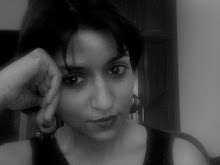At funerals, inevitably someone will look at the body laid out and whisper, “He looks so peaceful.” Or, “She looks as though she’s sleeping.” But this is not true, even when the dearly departed has died peacefully, of natural causes, in his sleep, whatever euphemism you want to use. Once you’ve seen the body of someone you loved, or liked, or perhaps just knew, laid out on the floor, covered with a white sheet, propped up on a bed of ice in summer, the jaw sometimes tied to hold it in place, the nostrils plugged with cotton wool, you know that it isn’t inhabited any longer. Most corpses look like newly vacant houses. Whoever was in there has moved, address undisclosed.
I find a kind of peace in this idea, along with the regret and the grief and the rest of it.
Placing an obituary in the newspaper is a distasteful experience. First there’s the compression of a person’s life into a few words: “retired” or “beloved teacher” or “obedient son”, none of which capture the really important stuff, that her eyes crinkle up at the edges when she laughs or he could remember every lyric The Sex Pistols wrote, or that he came back from office and told funny stories about the monkeys who throw government into disarray by stealing files from the building. Then there’s the few stilted phrases for grief: “deeply mourned”, “shall be missed”, “life will not be the same”, none of which capture what this really means, the number of times you start dialing a number and stop because the person you want to speak to will not be there at the other end, the devastation of the small, unimportant routines of the day that involved three people and now involve just two, the cupboard space now available after you’ve donated the clothes that you always needed and no longer want. None of this can go into the ad.
Then there’s the reduction of all of it to column inches and money. Rs 2,000 approx for a photograph and a few lines in a paper that doesn’t have all that much circulation in Delhi; so a second ad, hovering between Rs 8,000 (without photo) and Rs 10,000 (with photo) in a better-circulated paper. If you cut out the three lines from her favourite poem, the one her mother wanted you to include, it will fit within the budget, but then something else will have to be trimmed: the wreaths, perhaps. No one will notice the absence of a wreath.
Some families use death in the same way as they use weddings, as an occasion on which you show off your wealth, your status, your ability to spend Rs 50,000 or above on a quarter-page or half-page notice. The dead are good revenue-earners for newspapers. Not quite as good as the To-Let section, not half as good as the Matrimonials, but they pull in more every day than Missing Persons or Miscellaneous, though Massage Parlours do significantly better.
There’s the etiquette, at which we agnostic-atheists are sadly deficient. We take the rice that you’re supposed to sprinkle on the face of the departed in one hand, the right, not both; next time we’ll remember. We discuss the merits of Nigam Bodh versus Lodhi in terms of crematoriums. Nigam Bodh has the Yamuna running alongside, but the hall is gloomy, like a third-rate school auditorium with the stage awkwardly placed so that it’s always difficult bringing the body in on its bier. Lodhi has a neem tree outside, and stone benches on which you can sit and contemplate the sign that says “Moksha Marg” and then, slightly unnervingly: “Doorbhasha” and gives the phone number. I know it’s the number of the crematorium, but it feels like an invitation; make your last call to The Departed here, before he’s progressed all the way along Moksha Marg.
As we leave, someone opens a door in the wall and I see the plots laid out like empty flower beds, containing the ashes of the day, spread out to cool. On some days there are the ashes of several bodies in adjacent plots; today there’s a breeze, and some of the ashes from one plot dance in the air and are carried over to the next. I like that, the idea that in death we might finally live up to the creaky, pious hopes of a hundred stiff school tableaux promoting national integration; I like the idea that the ashes of the dead might get a little mixed up, without regard to gender or caste or class, just as those boring hum sab ek hai songs we sang in school had it.
Saturday, July 02, 2005
Subscribe to:
Post Comments (Atom)

Beautiful. Have been through this experience (haven't we all) and find it reassuring to read it in a detached manner. Thank you.
ReplyDeleteA very close friend passed away a few days ago. And then I came across this post today. Thank you. You've described the generic sensations one goes through brilliantly.
ReplyDeleteWomen go to crematoria? How do you know about the Neem tree and the Moksha Marg sign?
ReplyDelete